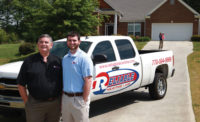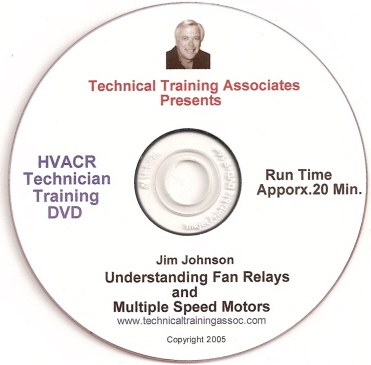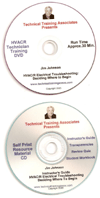Convincing Customers
Let’s use the following scenario. You are an HVAC contractor. Your customer is fretting over the fact that most of the energy tax credits for high-efficiency furnaces have expired or are greatly reduced. You need to give them reasons why high efficiency is still the viable solution — and one of those reasons is due to variable speed technology.
Dan Schillinger, business development, variable speed, Danfoss, used this comparison. “Imagine driving your car with only a toggle switch to determine your speed,” he said. “Your only options in this situation are to run the car at full speed or turn it completely off. This is how traditional compressors operate. They run at one speed and cycle on/off to match the load.
“Variable speed compressors and drives act similarly to a car’s accelerator pedal, which enables the driver to control and match the speed of the car to their exact needs at any given moment or road conditions. Variable speed means being able to precisely match system capacity to the actual load. They can slow down or speed up based on load. For a homeowner, this translates to increased comfort and energy savings.”
John Schneider, vice president of variable speed, Air Conditioning business, Emerson Climate Technologies, added this explanation. “Variable speed means breakthrough energy savings and comfort for heat pumps and air conditioners,” he said. “By varying the speed of the scroll compressor, systems are able to better match load in heating and cooling. As a result, systems operate more efficiently at light load, while still being capable of speeding up to deliver full capacity when needed.
“In the summer, by reducing capacity to match lighter loads, systems with variable speed scroll compressors increase run time to remove moisture and reduce relative humidity, resulting in improved comfort. In the winter, by increasing the speed of the scroll compressor, systems are able to maintain capacity and deliver hotter supply air, even at low outdoor ambient temperatures.”
Joe Rice, product manager for Grundfos Pumps Corp., talked about energy savings. “While there is a price premium for pumps and motors integrated with variable speed technology, contractors should remember that power consumption represents 85 percent of a pump’s lifetime costs,” he said. “Therefore, even the smallest improvement in efficiency can translate into sizable savings over the 15-year average pump lifespan. In fact, some of today’s leading integrated, variable speed circulators offer payback in as little as two years.”
Christopher Mohalley, Genteq’s master trainer, discussed how variable speed adjusts to changing parameters. “Variable speed describes an electronically controlled motor that can vary its operating speed automatically to provide better airflow in an HVAC system when system parameters change,” he said. “Such parameters include dirt load on the filter and heat exchange coils and closed or blocked registers and grilles. This is very beneficial to maintaining the efficiency of the HVAC system and the comfort it provides.”
“Variable drives hold the promise of sizable energy savings,” said Adam Willwerth, marketing manager for Electro Static Technology. “Operations and maintenance costs can account for 60 to 80 percent of a facility’s lifecycle costs. Challenged to reduce energy consumption, facility managers are installing variable frequency drives in HVAC systems. By allowing motors to run at less than full speed, these drives can yield energy savings of 20 to 30 percent.”
Changing Technology
It is not only important to understand the concept of variable speed, but also to keep up on changes to the technology of variable speed. For example, in the last 10 years, Schillinger said that as the technology has continued to advance and develop, it has also become less complex. “The user interface of the variable speed drive has simplified, becoming easier for OEMs and field technicians to use,” he said.
“The application of variable speed technology has also become more widespread in recent years due to its energy savings benefits. Improved power factor correction methods have made variable frequency drives more commonplace on HVAC applications such as blower motors.”
Schneider used the example of an Emerson product that has been a key in technological change — the Copeland Scroll variable speed compressor for the U.S. unitary market. “Several key features have been developed to achieve variable speed performance, such as BPM [brushless permanent magnet] motor technology and optimized scrolls for highest efficiency, proven oil pump for reliability at all speeds, and temperature sensing for reliability and protection,” he said.
He continued, “With the wide frequency range and dc input to these motors, variable speed applications utilize motor control drive inverters to power the motors and set the operating frequency. The motor control drive contains software that enables the drive to operate efficiently and protect the compressor. Some of the most advanced drives include diagnostics to help contractors troubleshoot and service variable speed systems.”
Mohalley noted that the evolving technology ultimately improves reliability. “Improving reliability is very important to consumers due to the cost and perceived vulnerability of electronic technology,” he said. “As HVAC manufacturers have moved from single-stage, to multi-stage, and now to modulating systems, the variable speed motor is almost a requirement to get the full potential and comfort.”
Rice said, “Instead of using constant speed pumps, variable speed technology is able to adjust pump output based on demand. Rather than running flat-out at top horsepower and bleeding off excess pressure to reach the desired output, the more energy-efficient option is to design a system that starts from zero and ramps up to meet the specific demand. Since demand is not a constant for most hydronic heating systems, why not vary output?
“Ten years ago, when energy costs were not paramount, the conventional thinking held that it didn’t make sense to use variable speed drive technology on motors smaller than 50 horsepower [hp]. Since that time, the industry discovered that the energy and operational efficiencies should not be reserved only for large applications.”
As an example, Rice noted that in 2008, when Grundfos introduced the Magna variable-speed wet rotor circulator, “Contractors could leverage smart drive technology for fractional hp motors, ideal for flow ranges from 15 to 180 gallons per minute.”
Energy Savings
According to Schillinger, total savings vary and depend on the application and climate. “But adding variable speed technology to a residential air conditioning system, for example, can produce an expected increase of four to five SEER points, compared to a traditional fixed-speed system,” he said.
“Adding variable speed compressors to a dedicated outdoor air system can produce anywhere from 20 to 40 percent savings depending on the regional climate.”
Schneider said, “Heat pumps equipped with Copeland Scroll variable speed compressors deliver 29 to 69 percent greater heating efficiency than other heat pumps. In addition, these same systems achieve over 20 SEER cooling efficiency. The result for homeowners is about 40 percent year-round energy savings versus 13 SEER systems. Even with this breakthrough improvement in heating and cooling efficiency, 75 percent of the energy savings is in heating.”
“The energy savings of the motor is built into the SEER and COP [coefficient of performance] ratings for a/c and heat pump systems,” said Mohalley. “On fossil fuel furnaces there is currently no electrical efficiency rating, only fuel efficiency rating. This makes it important to understand and convey to the consumer how much electrical energy savings they can realize with their furnace, as it will not be included in the comparison between the new system and the old one. There is also big money to be saved operating in constant fan mode.”
“A very basic variable speed drive will save between 10 and 20 percent energy compared to a conventional induction-type motor,” said Rice. “A more advanced technology, or ECM [electronically commutated motor], will consume 50 percent less energy. Some variable speed circulators, such as the Grundfos Magna, use an integrated logic board to ‘learn’ the system’s usage patterns in order to boost the standard 50 percent energy savings up to 85 percent.”
Willwerth said that energy savings go up when equipment is maintained, too. “When HVAC equipment does not have to be repaired or replaced as often, consumption drops significantly,” he said. “But without effective, long-term bearing protection such as the Aegis SGR bearing protection ring, those savings could be wiped out by high maintenance costs. By diverting bearing currents safely to ground, SGRs extend motor life and thus ensure the reliable, long-term operation of VFD-driven motor systems, locking in energy savings to make these systems sustainable and truly green.”
Publication date: 01/16/2012







